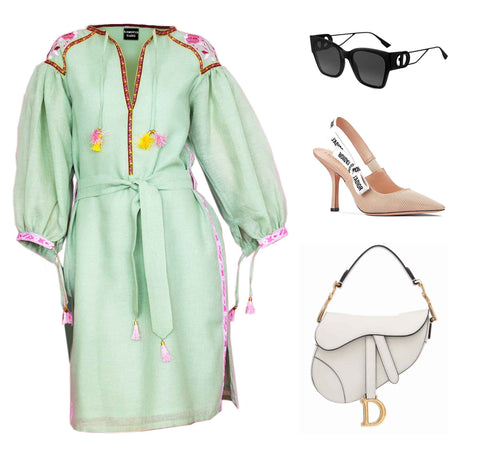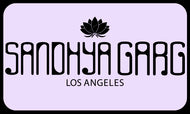What is Bohemian style and fashion? Bohemian look decoded

Boho Chic Style Explained



Bohemian Definition
"Bohemianism is the practice of an unconventional lifestyle, often in the company of like-minded people and with few permanent ties. Bohemian Lifestyle involves musical, artistic, literary, or spiritual pursuits. In this context, Bohemians may or may not be wanderers, adventurers, or vagabonds.
This use of the word bohemian first appeared in the English language in the 19th century to describe the non-traditional lifestyles of marginalized and impoverished artists, writers, journalists, musicians, and actors in major European cities.
Bohemians were associated with unorthodox or anti-establishment political or social viewpoints, which often were expressed through free love, frugality, and—in some cases—simple living or voluntary poverty. A more economically privileged, wealthy, or even aristocratic bohemian circle is sometimes referred to as haute bohème (literally "high Bohemia").
The term bohemianism emerged in France in the early 19th century, when artists and creators began to concentrate in the lower-rent, lower class, Romani neighborhoods. Bohémien was a common term for the Romani people of France, who were mistakenly thought to have reached France in the 15th century via Bohemia (the western part of modern Czech Republic)."

Bohemian maxi dresses
European bohemianism
Literary and artistic bohemians were associated in the French imagination with the roving Romani people. Not only were Romani called bohémiens in French because they were believed to have come to France from Bohemia, but literary bohemians and the Romani were both outsiders, apart from conventional society and untroubled by its disapproval. Use of the French and English terms to refer to the Romani is now old-fashioned and archaic, respectively, and both the French and English terms carry a connotation of arcane enlightenment (and are considered antonyms of the word philistine) and the less frequently intended, pejorative connotation of carelessness about personal hygiene and marital fidelity.
American bohemianism
In the 1850s, aesthetic bohemians began arriving in the United States. In New York City in 1857, a group of 15 to 20 young, cultured journalists flourished as self-described bohemians until the American Civil War began in 1861. This group gathered at a German bar on Broadway called Pfaff's beer cellar. Members included their leader Henry Clapp, Jr., Ada Clare, Walt Whitman, Fitz Hugh Ludlow, and actress Adah Isaacs Menken.
Similar groups in other cities were broken up as well by the Civil War and reporters spread out to report on the conflict. During the war, correspondents began to assume the title bohemian, and newspapermen in general took up the moniker. Bohemian became synonymous with newspaper writer. In 1866, war correspondent Junius Henri Browne, who wrote for the New York Tribune and Harper's Magazine, described bohemian journalists such as he was, as well as the few carefree women and lighthearted men he encountered during the war years.
San Francisco journalist Bret Harte first wrote as "The Bohemian" in The Golden Era in 1861, with this persona taking part in many satirical doings, the lot published in his book Bohemian Papers in 1867. Harte wrote, "Bohemia has never been located geographically, but any clear day when the sun is going down, if you mount Telegraph Hill, you shall see its pleasant valleys and cloud-capped hills glittering in the West ..."



- Look for fabrics that have are fair trade and ethically sourced. If you aren’t sure and the shop owner can’t tell you, you can also search the internet for brands that have pledged to make their clothing out of fair trade fabrics.
- You can also look for flowing dresses that you can then layer other pieces over or under to get an effortless look.
- Try to keep the layering towards the top of your body. You want the look the draw attention to your face, and if you do a lot of layering on the bottom (e.g. wearing pants under skirts) you will draw attention downwards which creates a “heavy” look.
- Emphasize your flowing pieces with one or two fitted pieces. Though you can certainly wear everything loosely fitted, if you want to, you can also throw in a few fitted pieces. For example, if you are wearing a very flowy tunic, you might then put on a pair of tight leggings, which will give you a bit of shape while also emphasizing the flowy shirt.
- You can, for example, wear a tight fitting bralette under a flowing shirt, you can layer a jacket over a loose-fitting tunic, or even layer all three together.
- This has the added advantage that if you get warm or cold you always have a layer you can remove or put back on whenever you need to.
-
Look for second hand clothing to mix with your new boho dresses. A true bohemian is mixes brand new clothing with old garments, as the style focuses on vintage clothing in addition to caring for the environment. Head to your nearest flea market or thrift shop where you can probably find good deals on clothing, and you may even be able to find original pieces from the 1960s and 1970s, which will really boost your bohemian wardrobe.
- If you know how to sew, you could even make your own clothing using whatever fabrics and patterns you like.
- If you do buy new clothing rather than going to your closest trendy clothing shop opt for independently owned small businesses where you can find out how and where the clothing was made. The clothing will certainly cost more, but it will also probably be of much better quality and will last you a lot longer.



 esigner. She studied and specialized in women's fashion at London College of Fashion, UK and has worked at Alexander McQueen, Gucci, Liberty London, Alice Temperley to name a few. She has her own successful resort dresses, special occasion dresses, wedding guest looks, swim coverups label. While on Project Runway Season 13, she won 2 challenges and was fortunate to show her collection at Mercedes-Benz New York Fashion Week. The brand has been featured in Marie Claire US, Ftv.com, Elle Magazine, Cosmopolitan Magazine, Vogue online to name a few.
esigner. She studied and specialized in women's fashion at London College of Fashion, UK and has worked at Alexander McQueen, Gucci, Liberty London, Alice Temperley to name a few. She has her own successful resort dresses, special occasion dresses, wedding guest looks, swim coverups label. While on Project Runway Season 13, she won 2 challenges and was fortunate to show her collection at Mercedes-Benz New York Fashion Week. The brand has been featured in Marie Claire US, Ftv.com, Elle Magazine, Cosmopolitan Magazine, Vogue online to name a few. She designs limited edition high end printed spring dresses, wearable art clothing and swim coverups. Beautiful prints are inspired from around the world to be worn during travel, resort stay or cruise holidays.
























Leave a comment